A tricky installation can take many forms, whether it is a location that is difficult to access, a massive awning that needs to be lifted several stories or plans that go awry.
But installers of a challenging project are not alone. They can call on their network—even local competition—for help. Devin Thompson, president of Patriot Awning in Charlotte, N.C., and Justin Barnes, CEO of Tropical J’s Inc. in Honolulu, Hawaii, have seen their share of challenging installations. They have insights into how to manage them and how to prevent a regular installation from becoming a tricky one.
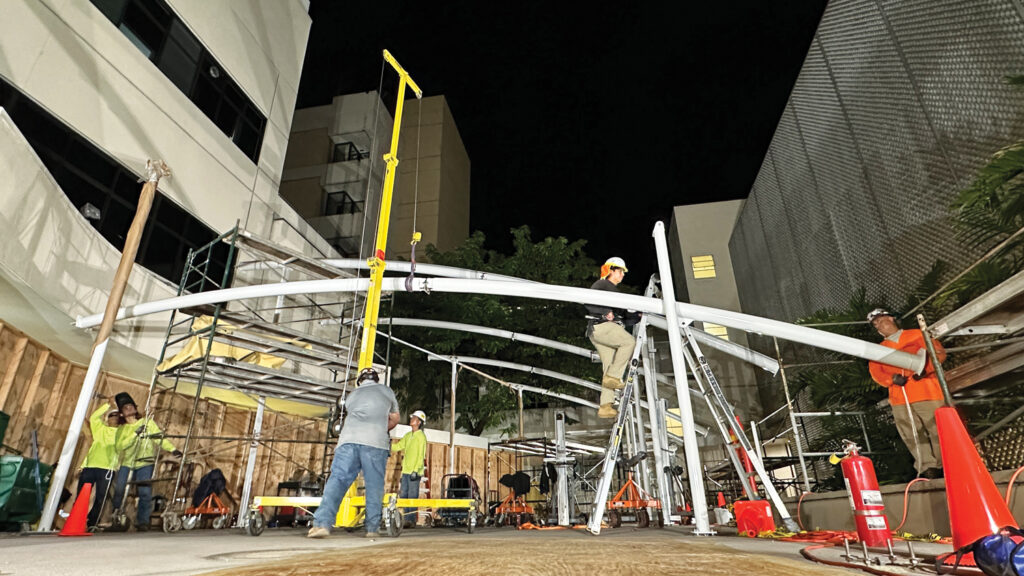
A change of plans
Tropical J’s Straub Medical Center Canopy project in Honolulu, Hawaii, called for installing a 75-foot-wide canopy over the hospital’s courtyard, which sits on top of the hospital’s laboratory. The courtyard, which is surrounded by the structure of the hospital, lacks direct outside access.
The installation called for raising a 1,700-pound pipe 17 feet into the air. Barnes is an advocate of using mini cranes because they can fit in places that other equipment can’t manage. “This can get through a double door,” he says.
Structural engineers initially approved the use of mini cranes, but it turned out that the courtyard—the roof of a laboratory—would not bear the weight of the crane. A tricky installation had now become trickier.
However, representatives from the mini-crane company proposed a solution: a roustabout, a crank-operated crane that could still lift the heavy pipe. “This did not have all the weight that a mini crane would require, and so it didn’t have the same impact on the floor,” Barnes says.
Using the roustabout, Tropical J’s successfully completed the project and in 2024, netted the Advanced Textiles Association’s International Achievement Award for Outstanding Achievement in the Commercial Awnings & Canopies category.

Climbing and rappelling
Barnes says that access to a site is one of the factors that can make installations difficult. To mitigate that problem, Barnes has adopted a different method of reaching challenging areas.
“I like to introduce climbing gear because a lot of times, climbing gear allows me not to set up scaffolding. I don’t have to get lifts,” he says. Not only does climbing gear solve an accessibility problem, but the climbing option can be less expensive. “Climbing gear has been a very cost-effective way to get to challenging areas,” he says.
But saving money isn’t the only reason that climbing has become a vital component in Tropical J’s approach. Barnes emphasizes that climbing adds an element of fun to the work. His dedication to climbing is so steadfast that the business features a climbing wall at its office so staff members can practice their climbing skills.
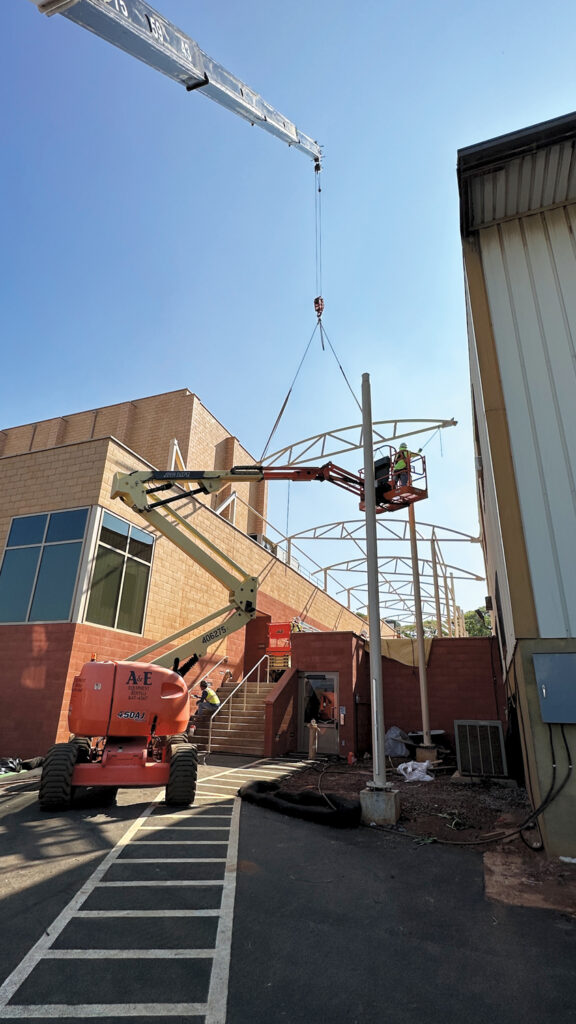
Averting trickiness
One way to make an installation less tricky is to remove the guesswork. Tropical J’s uses laser measuring tools made by Leica to obtain accurate measurements of sites, which then can be used to create models of installation locations. These models help reveal challenges about locations so the company can determine the right equipment for jobs.
“You can imagine how much easier it is to plan access with really accurate site data,” says Barnes.

Patriot Awnings also uses technology to eliminate surprises. “I think any awning contractor would tell you that when you’re attaching awnings to an EIFS [exterior insulation and finish system] wall, you never know what’s behind there,” says Thompson. “So we’ve invested in equipment that scans walls to find studs inside of it. That comes in handy because it gives you an idea of if there’s plumbing inside the walls where you might be running screws through or electrical.”
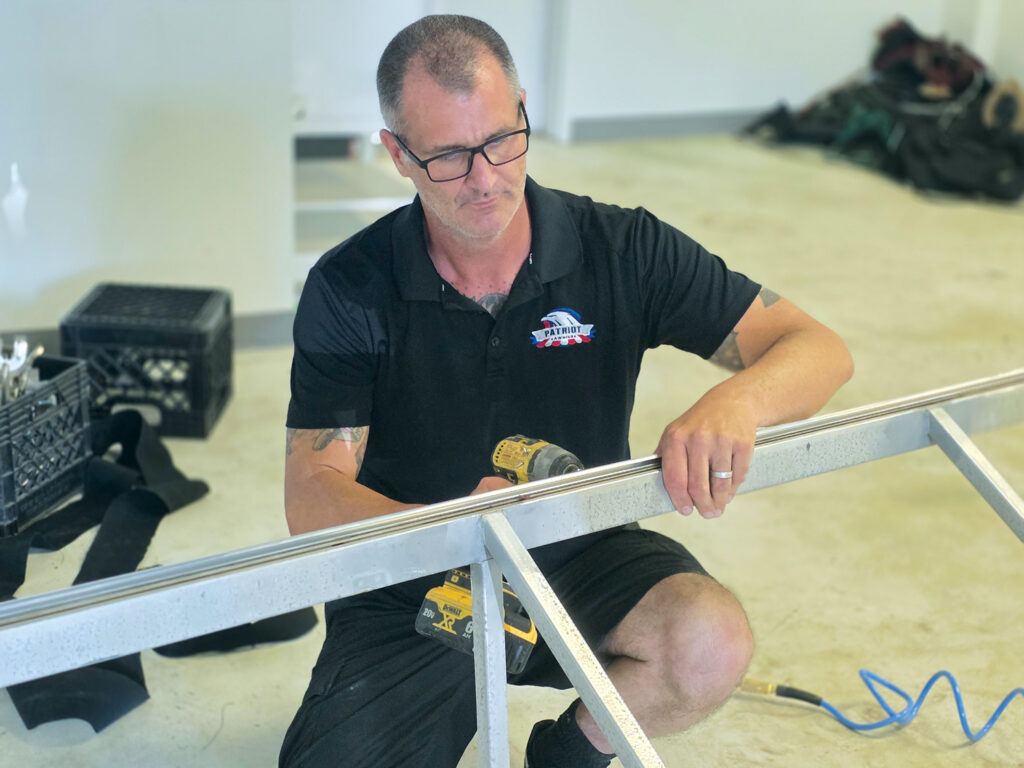
In his 11 years at Patriot Awning, Thompson has accumulated a few tricks for his tool belt. For tackling large patio canopies, he advises, “Spraying the C-rail with silicone will lubricate it as you’re trying to slide it in,” he says. “And if you take some 2-inch webbing from Trivantage and sew it into a loop, you can then tie another piece of webbing to it, pull it across the frame, and not have to have somebody up on top of the awning.”
Talking it through
Then there are the projects where the challenges are formidable and the carefully thought-out plan likely won’t succeed. Sometimes, reimagining the project can help.
“We try to make things more manageable so that they are less tricky,” says Barnes. He used the example of a project that called for installing a “massive” canopy. “We made it into three parts so that we didn’t have to deal with such a large piece.”
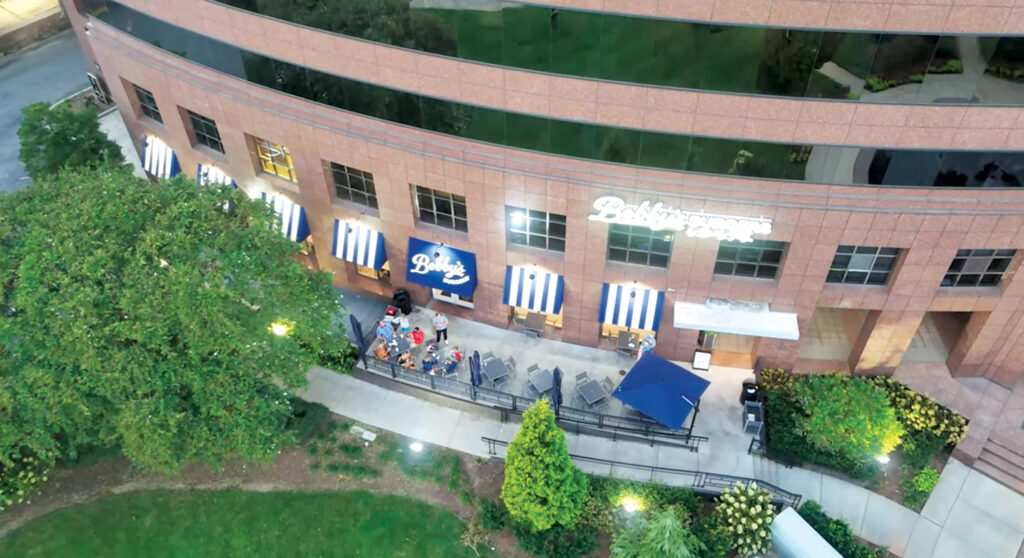
Sometimes, even professionals must ask for guidance. “Take a step back, breathe, call some people that you’re close to in the awning industry and have them help you walk through it,” says Thompson. “And that’s why building a good relationship with your competitors is a good thing.”
He gives an example of when he sought assistance from another installer. “We had rented a 65-foot boom lift to get the awning up on the wall and drove it down an embankment,” says Thompson. “It got stuck. I called our friend John [Mullins] with Charlotte Awnings Unlimited, and he gave us some advice and helped us out and we ended up getting the lift out of there.”
There also may come a time when an installer might need to have an honest discussion with a client or refer a project to a competitor.
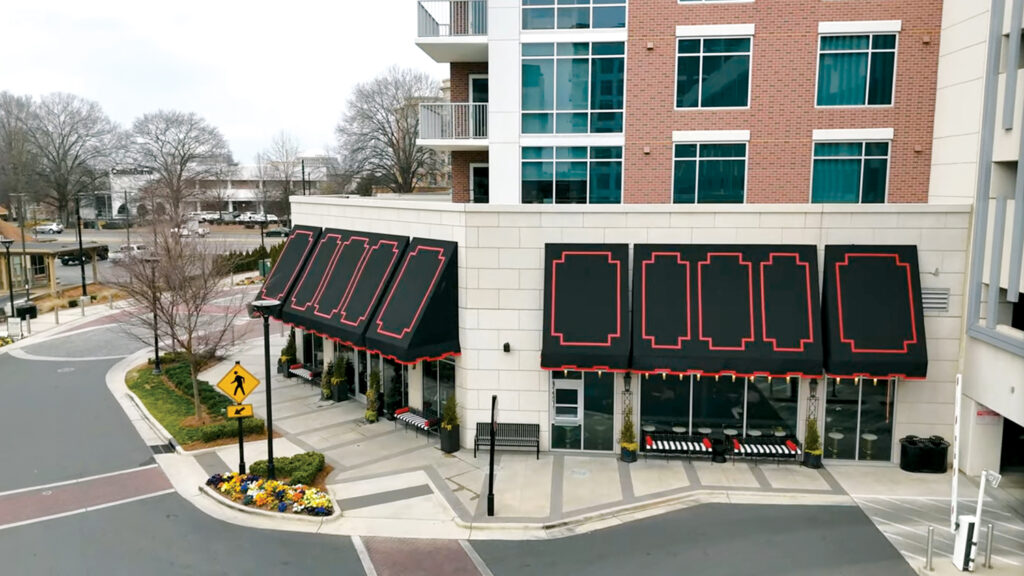
“Since I’ve started Patriot Awning, I’ve just become a little bit wiser—or at least being upfront with the customer—and telling them that there’s going to be a potential problem,” says Thompson.
“If you feel like you’re about to take on a project that presents insurmountable challenges, there’s nothing wrong with telling the customer, ‘We’re probably not the best fit for the job’ and then referring them to a friendly competitor,” says Thompson. “It’s better to [refer a project] than have a customer mad at you.”
Alan Pierce is a freelance writer in Burnsville, Minn., with a background in journalism as a reporter and editor.
Members of the Professional Awning Manufacturers have access to exclusive resources.
The post Tools, tips and tricks for awning installs appeared first on Fabric Architecture Magazine.






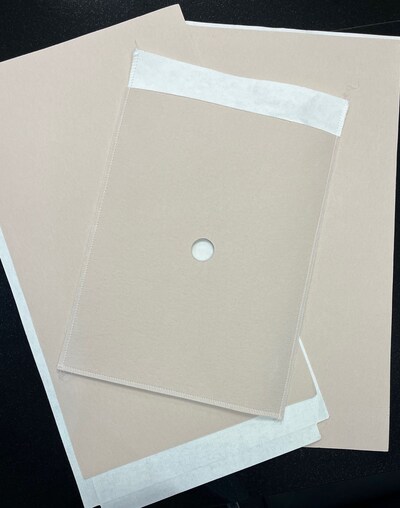

Leave A Comment